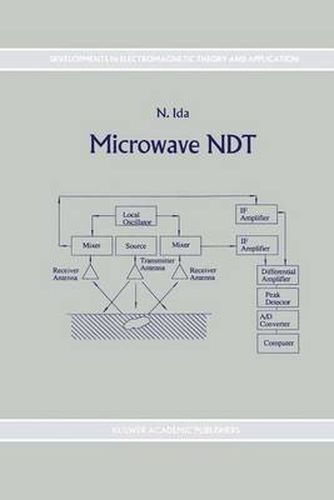Readings Newsletter
Become a Readings Member to make your shopping experience even easier.
Sign in or sign up for free!
You’re not far away from qualifying for FREE standard shipping within Australia
You’ve qualified for FREE standard shipping within Australia
The cart is loading…






This title is printed to order. This book may have been self-published. If so, we cannot guarantee the quality of the content. In the main most books will have gone through the editing process however some may not. We therefore suggest that you be aware of this before ordering this book. If in doubt check either the author or publisher’s details as we are unable to accept any returns unless they are faulty. Please contact us if you have any questions.
Microwave testing has been paid only scant attention in the literature as a method for nondestructive testing of materials, yet it offers some attractive features, especially for the testing of composite and other non-metalic materials. Microwave techniques have been used in a large number of applications that can be classified as nondestructive testing applications, ranging from large scale remote sensing to detection of tumours in the body. This volume describes a unified approach to microwave nondestructive testing by presenting the three essential components of testing: theory, practice and modelling. While recognizing that each of these subjects is wide enough to justify a volume of its own, the presentation of the three topics together shows that these are interrelated and should be practiced together. While few will argue against a good theoretical backgound, modelling and simulation of the testing environment is seldom part of the NDT training in any method, but particularly so in microwave testing. The text is divided into four parts. The first part presents the field theory background necessary for understanding the microwave domain. The second part treats microwave measurements as well as devices and sources and the third part discusses practical tests applicable to a variety of materials and geometries. The fourth part discusses modelling of microwave testing. Each chapter contains a bibliography intended to expand on the material given and, in particular, to point to subjects which could not be covered either as not appropriate or for lack of space. This work should be of interest to engineers, applied physicists and materials scientists.
$9.00 standard shipping within Australia
FREE standard shipping within Australia for orders over $100.00
Express & International shipping calculated at checkout
This title is printed to order. This book may have been self-published. If so, we cannot guarantee the quality of the content. In the main most books will have gone through the editing process however some may not. We therefore suggest that you be aware of this before ordering this book. If in doubt check either the author or publisher’s details as we are unable to accept any returns unless they are faulty. Please contact us if you have any questions.
Microwave testing has been paid only scant attention in the literature as a method for nondestructive testing of materials, yet it offers some attractive features, especially for the testing of composite and other non-metalic materials. Microwave techniques have been used in a large number of applications that can be classified as nondestructive testing applications, ranging from large scale remote sensing to detection of tumours in the body. This volume describes a unified approach to microwave nondestructive testing by presenting the three essential components of testing: theory, practice and modelling. While recognizing that each of these subjects is wide enough to justify a volume of its own, the presentation of the three topics together shows that these are interrelated and should be practiced together. While few will argue against a good theoretical backgound, modelling and simulation of the testing environment is seldom part of the NDT training in any method, but particularly so in microwave testing. The text is divided into four parts. The first part presents the field theory background necessary for understanding the microwave domain. The second part treats microwave measurements as well as devices and sources and the third part discusses practical tests applicable to a variety of materials and geometries. The fourth part discusses modelling of microwave testing. Each chapter contains a bibliography intended to expand on the material given and, in particular, to point to subjects which could not be covered either as not appropriate or for lack of space. This work should be of interest to engineers, applied physicists and materials scientists.